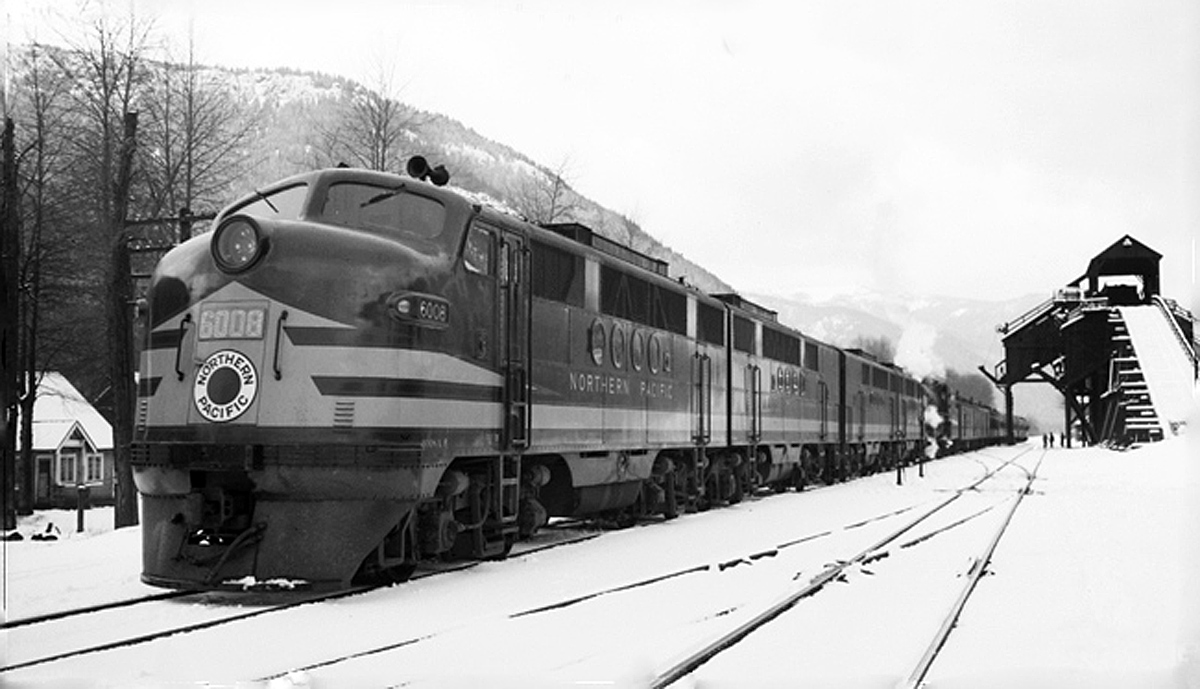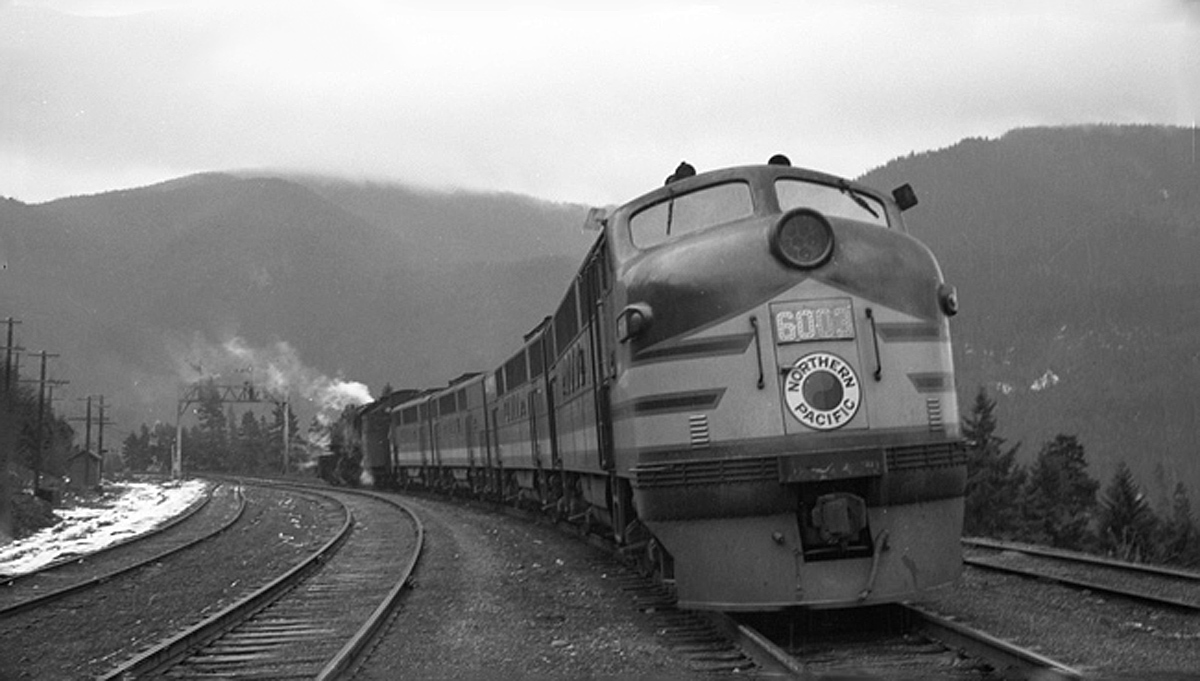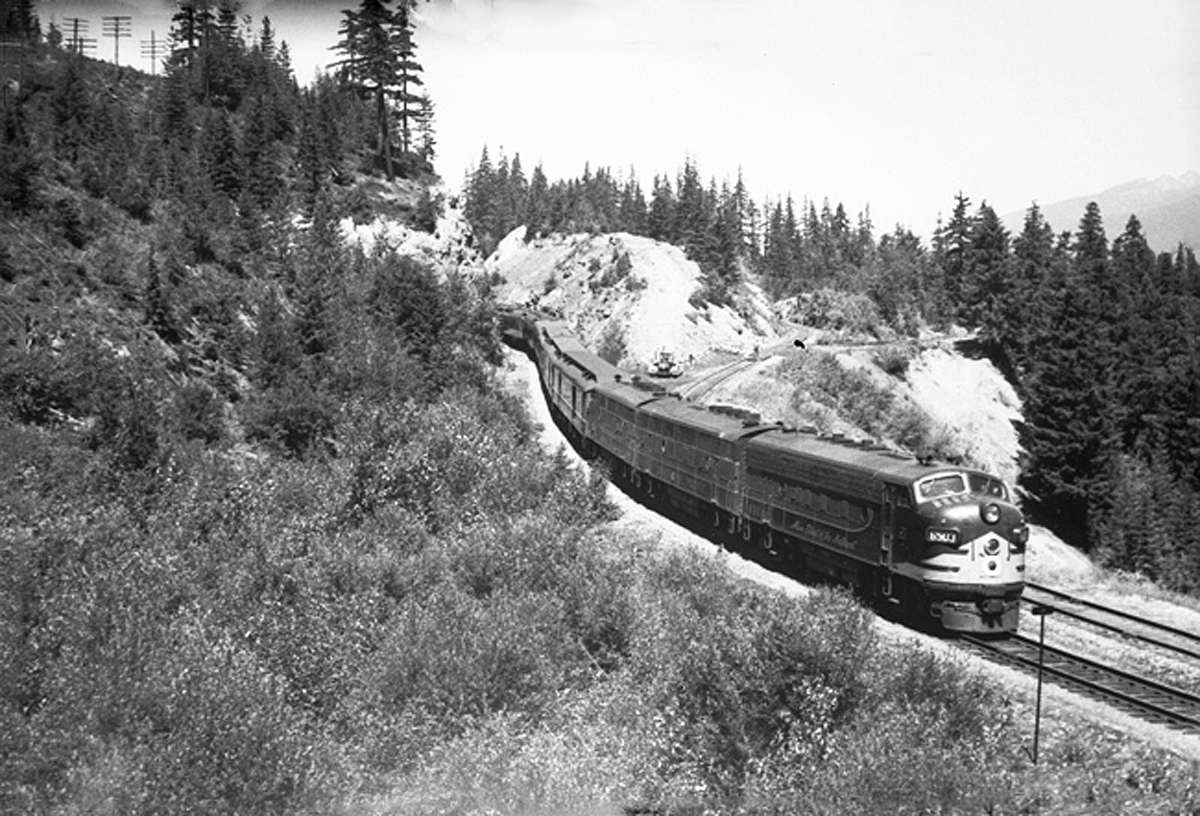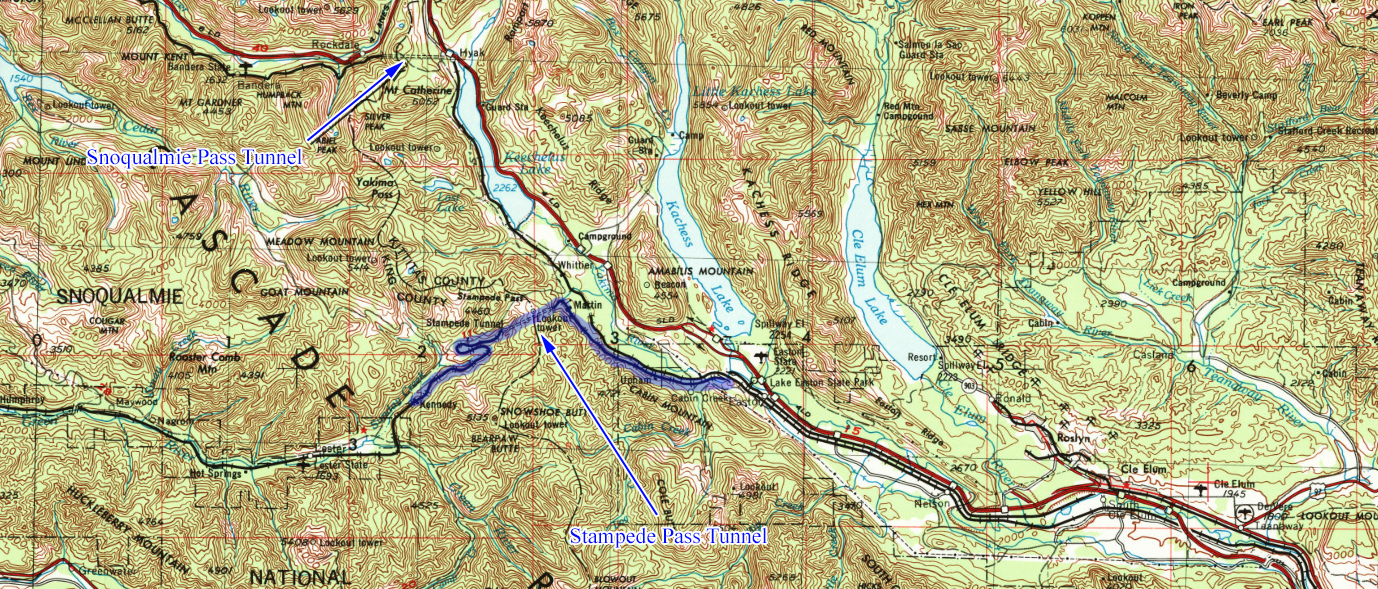Stampede Pass (Railroad): Map, Location, History
Last revised: August 24, 2024
By: Adam Burns
Stampede Pass is a mountain pass in the northwest United States, located in the Cascade Range in Washington.
It was historically used by the Northern Pacific as part of their mainline through the Cascade Range, and on a larger scale comprised the western end of its transcontinental route between Minnesota and Washington state.
The original tunnel was completed in 1888, but was replaced in 1914 by a new tunnel at a lower elevation. The pass is now used by BNSF Railway.
The NP was the first railroad to conquer the Cascades and the line operated as a through route until the Burlington Northern era. Following the mega railroad's 1970 creation it shutdown Stampede in the 1980s, electing to use Great Northern's Stevens Pass for all through movements. Stevens is home to Cascade Tunnel, one of the most impressive feats of railroad engineering.
Unfortunately, its monumental length (7.9 miles) and ventilation problems resulted in eastbound trains having to wait up to 45 minutes at Scenic, Washington for the tunnel to be cleared of toxic fumes after westbound trains had passed.
This factor, in addition to increased business, resulted in successor BNSF Railway reopening Stampede in the 1990s. While it has never reached capacity levels officials originally envisioned, the line remains an important artery today.
Photos
 A perfect A-B-B-A set of nearly new Northern Pacific FTs led by #6008 couple on to the head-end of the eastbound Alaskan at Lester, Washington on March 31, 1945 to make the assault over Stampede. Ron Nixon photo/Museum Of The Rockies collection.
A perfect A-B-B-A set of nearly new Northern Pacific FTs led by #6008 couple on to the head-end of the eastbound Alaskan at Lester, Washington on March 31, 1945 to make the assault over Stampede. Ron Nixon photo/Museum Of The Rockies collection.History
Stampede Pass, an illustrious piece of American railway history, owes its existence to the ambitious endeavors of the Northern Pacific.
These plans set into motion the creation of a remarkable corridor through the rugged Cascade Mountains of Washington State. The project began in early 1881 when NP civil engineer Virgil Bogue discovered the pass and began surveying a line through the area.
The Northern Pacific was the first of the three major Northwestern railroads to begin construction and the first completed to the Pacific Northwest.
Construction
Construction on the Northern Pacific began in 1870 and would roughly follow the expedition of Lewis and Clark who originally chartered the western territory in the early 19th century.
The pass reaches an impressive elevation of 3,672 feet, slicing through the towering peaks of its host range, the Cascades. At this altitude, it presented a number of logistical challenges and obstacles to the construction team and those who operated it thereafter.
While the railroad had opened a roundabout link to Tacoma, Washington by 1883 it had yet to complete the tunnel and a direct route to Seattle. Its new 248-mile "Cascade Branch" heading west from Pasco was partially opened by 1886 but required the use of brutal switchbacks. These switchbacks were as steep as 5.6% in some areas.
 Another nearly new A-B-B-A set of NP FTs hooks on to Class Z-3 2-8-8-2 #4013 apparently as helpers to assist a freight train over the pass on February 11, 1945. Ron Nixon photo/Museum Of The Rockies collection.
Another nearly new A-B-B-A set of NP FTs hooks on to Class Z-3 2-8-8-2 #4013 apparently as helpers to assist a freight train over the pass on February 11, 1945. Ron Nixon photo/Museum Of The Rockies collection.Early Operation
To hoist freight and passenger trains over the pass the Northern Pacific purchased two massive 2-10-0 Decapods, the heaviest and most powerful steam locomotives in the world at the time.
Listed as Class M by the railroad they carried road numbers 1 and 2 and were built by Burnham, Parry, Williams & Company (Baldwin Locomotive Works).
They weighed more than 135 tons and could produce nearly 35,000 pounds of tractive effort. Work on the Stampede Pass Tunnel began in January, 1886 with contractor Nelson Bennett winning the contract.
Map
Tunnel
While work was initially slow, Bennett's state of art equipment, including air compressors, drills, narrow-gauge steam locomotives, and even an electric light plant helped to quickly speed up construction.
At one point crews were boring up to 16-feet of new tunnel everyday. With more than 300 workers employed on the project it took just 2 ½ years to complete the 9,850-foot tunnel. It officially opened on May 27, 1888.
 Northern Pacific 2-8-8-2 #4016 (Z-3) assists a string of FT's with a freight at Stampede, Washington on February 11, 1945. Ron Nixon photo/Museum Of The Rockies collection.
Northern Pacific 2-8-8-2 #4016 (Z-3) assists a string of FT's with a freight at Stampede, Washington on February 11, 1945. Ron Nixon photo/Museum Of The Rockies collection.Overall the tunnel carried a maximum grade of 2.2% from both its eastward and westward approaches. Nevertheless, the grades posed a significant operational challenge for generations - which continues to the present day - due to the harsh weather conditions often prevalent at such altitudes.
Just over 20 years after the tunnel opened NP began double-tracking the line, which was completed in 1915.
1984 Closure
In 1984 then Burlington Northern considered Stampede redundant with falling traffic levels and closed the pass to save on maintenance costs.
 Northern Pacific's eastbound "Alaskan" is negotiating Stampede at Martin, Washington led by an A-B-A set of F3s with #6503 up front on July 16, 1951. Ron Nixon photo/Museum Of The Rockies collection.
Northern Pacific's eastbound "Alaskan" is negotiating Stampede at Martin, Washington led by an A-B-A set of F3s with #6503 up front on July 16, 1951. Ron Nixon photo/Museum Of The Rockies collection.Rebirth
However, between 1995 and 1996 successor Burlington Northern Santa Fe spent millions to reopen the pass and today it acts as a relief valve for the increased tonnage coming from the Port of Seattle. It officially reopened to rail traffic on October 10, 1996. The rebuild was extensively covered by Trains Magazine at the time.
Today
Today, the Stampede Pass is a vibrant transport route once again. Now under the diligent management of BNSF, the line sees anywhere from 2 to 6 trains daily with an operational capacity of 10 trains per day.
It has proven its continous potential as an invaluable contribution to the transportation infrastructure of the United States. Every train ride through its path is a poignant reminder of the perseverance, endurance, and innovation that went into its creation.
Operating Stampede hasn't been a smooth journey throughout the years. During the Northern Pacific era, the steep grades, high elevations, and severe weather conditions often led to operational difficulties. Winter, especially, presented significant challenges with snow accumulation, often reaching several feet.
Despite these challenges, Northern Pacific demonstrated exceptional dedication in ensuring the pass delivered on its promise as a vital trade and transport route. The company managed to overcome the adversities by investing in snow sheds, double tracking, powerful steam locomotives, and later diesel-electrics.
With its renewal under the BNSF, Stampede Pass inherited the technological advancements and refined operation methods of the modern age.
Thanks to the implementation of effective railroad technologies and infrastructure improvements, the pass is operated more efficiently and safely today while maintaining its relevance and usefulness in the national railway circuit.
BNSF's commitment to the legacy and continuity of Stampede Pass operation is a testimony to the importance of this historic railroad. By keeping the route active, the company acknowledges its irreplaceable contribution to the development and progress of America's Pacific Northwest.
The modern-day usage of Stampede Pass serves not only as a functioning part of the national railway grid but also as an emblematic representation of perseverance and progress. Every train passage narrates the evolving story of technological and administrative advancements that have shaped this railway over the decades.
The operational journey of Stampede Pass makes an intriguing case study of the interplay of geography, technology, and societal requirements. From the struggle during its construction days to the endeavours in revitalising it, the pass serves as an embodiment of society's never-ending quest for progress and connectivity.
In retrospect, the story of Stampede Pass is a narrative of human tenacity and resourcefulness. It is a testament to our remarkable ability to transform adversity into opportunity, and to continually shape and reshape our environments for collective benefit, echoing the sentiments of the indomitable spirit of progress.
In conclusion, Stampede Pass embodies our relentless struggle and triumph over geographical challenges. By forging a path through rugged terrains, skirting around towering peaks and delving into the heart of mountains, the pass represents a journey marked by struggles, victories, and perpetual aspiration for progress. It stands as a monument to the human spirit, and a symbol of American railway excellence.

